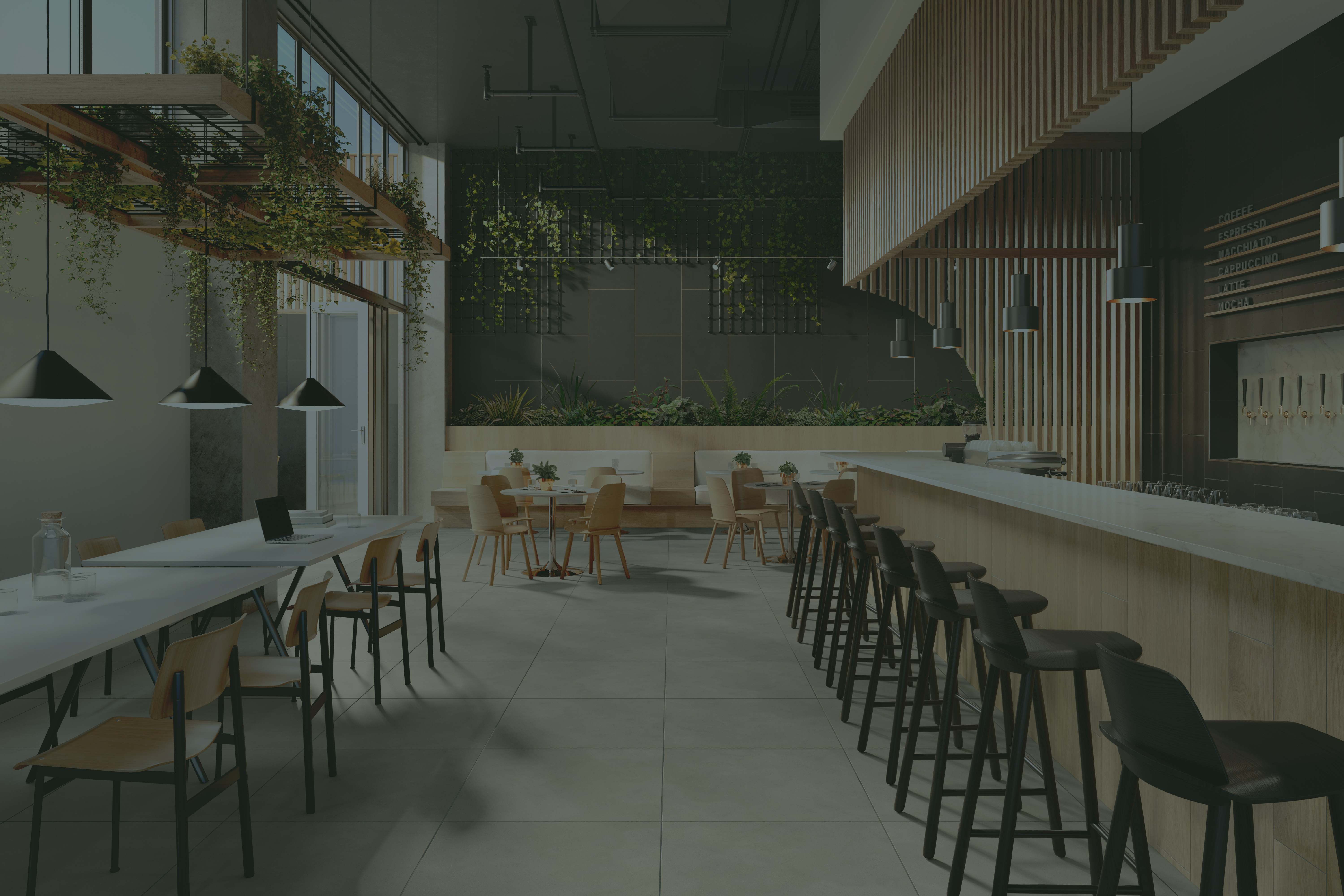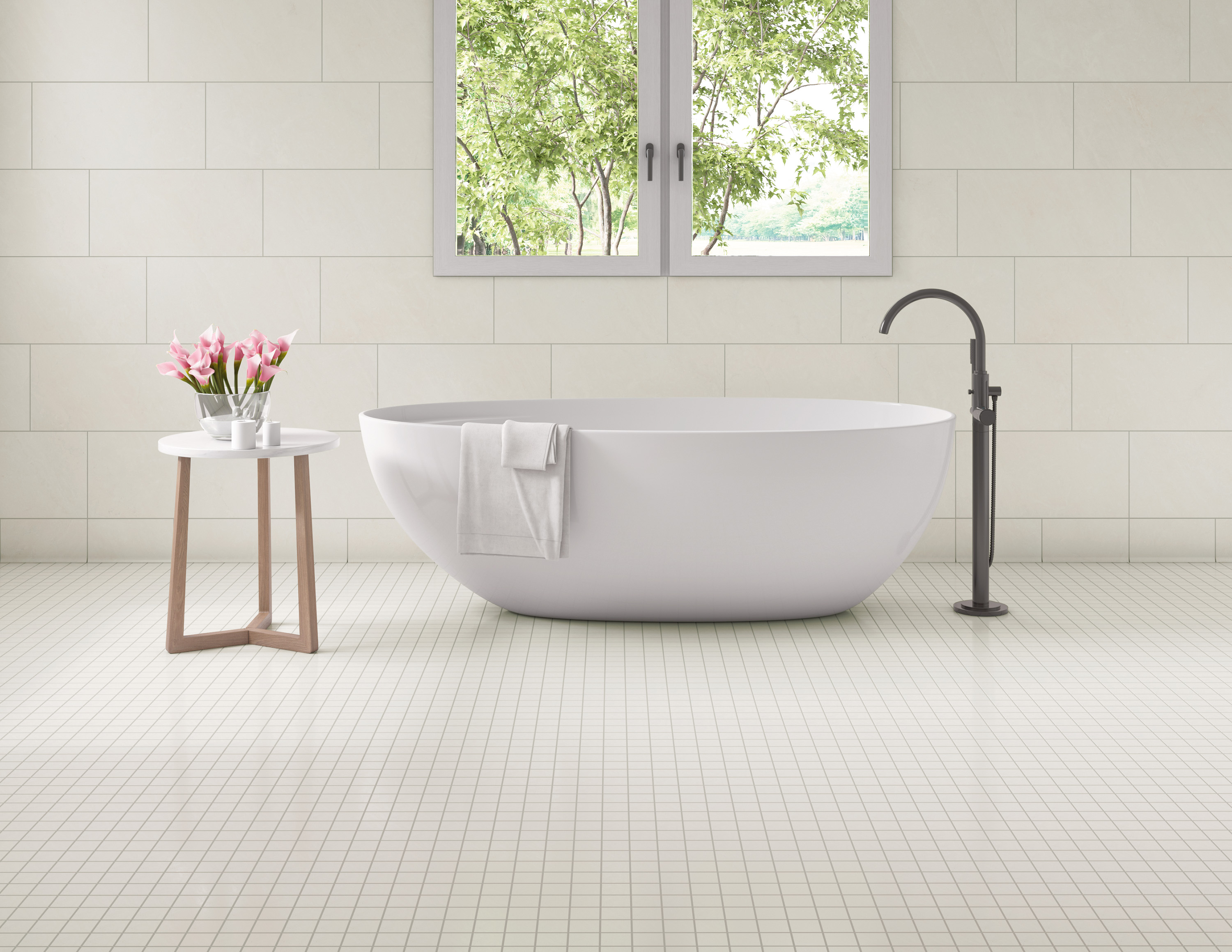
THE ENVIRONMENTAL HEALTH STORY OF
Healthy material |
Porcelain, ceramic, glass and quarry tile are inherently non-porous, due to their high firing temperatures. Produced from natural ingredients, tile is completely non-toxic making it inherently hypoallergenic, antibacterial and free of VOCs, PVC and formaldehyde. |
Water-resistant for wet and submerged applications |
Porcelain, ceramic tile, quarry stone and glass are water-resistant and do not swell or degrade with moisture. These properties, along with a host of materials available to achieve a waterproof installation, make all* tile perfect for wet and submerged applications such as pools, baths, showers, fountains, and spas. Porcelain tiles are classified as impervious, with a water absorption below 0.5%.
*Some glass tile may not be thermal shock stable. Follow the manufacturer’s guidance for installation location suitability. |
Durable, scratch, stain, and chemical resistant & easy to clean |
Manufactured to stringent industry standards for quality and durability, porcelain and quarry tile have a high breaking strength*, do not dent, scrape, cut or stain, and can withstand heavy use and high-traffic applications. Because porcelain, ceramic, quarry and glass tile are easy to clean with soap and water, the use of harsh cleaning chemicals are avoided.
*Ceramic and Glass tile in commercial applications are typically used in wall applications, have slightly lower breaking strength and are less scratch resistant. |
Slip-resistant |
Slip-resistant porcelain and quarry tiles are available to meet industry standards for minimum Dynamic Coefficient of Friction (DCOF), as projects require. |
Lowest carbon footprint |
Porcelain, ceramic, quarry and glass tile have the lowest life cycle global warming potential, and lowest fossil fuel resource depletion compared to other flooring and surface coverings in North America. Varied tile options are widely available, reducing fuel consumption for product transportation and emitting fewer greenhouse gases. |
Lowest Life Cycle Cost |
High durability reduces the need for replacement, lowers maintenance requirements, and provides lower overall cost throughout the life of a building compared with other flooring and surface coverings. |
Installation Cost and Complexity |
A quality tile installation requires proper substrate preparation and can be more labor-intensive than other flooring and surface coverings, resulting in higher up-front costs. On the flip side, tile installations can last forever and have a lower life cycle cost than other flooring options. |
Acoustics |
Tile reflects and transmits sound, resulting in a noisier interior environment. Sound reduction membranes are available to mitigate sound transmission from one room to another. Acoustic panels and other interior design elements can be employed as well. Additionally, the inherent thermal mass of tile helps reduce energy load associated with heating and cooling a building, providing a benefit outweighing any acoustical performance drawbacks. |
Grout joints |
Cement-based grout is absorptive and may risk staining. Solutions include adding stain-resistant technology to the grout, or applying eco-friendly and VOC-free sealers, where needed, for water resistance. Technological advancements in manufacturing have led to the availability of much larger porcelain and ceramic tiles, requiring less grout overall in a project. |
Manufacturing energy requirements |
The extreme temperatures needed to manufacture tile require high energy and natural gas consumption. However, manufacturing equipment has become increasingly more energy efficient, and there are no petroleum-based ingredients within the products themselves. This is not the case for vinyl, carpet, and other plastic-based flooring options. In fact, tile has the lowest lifecycle carbon footprint, depleting fewer fossil fuel resources. |

Recent progress in tile manufacturing has made way for large panel GPTP, Gauged Porcelain Tile Panels. The new developments in two gauges or thickness ranges, work well for floor, wall, countertop, and exterior installations. With fewer seams, large format slabs provide faster installation along with design options not previously available. Hugely popular bookmatch, random stone veining, and concrete slab looks are now available with the maintenance and sustainability features of ceramic.
Read More
Tile Trends for 2021 focus mainly on natural looks--the only exception being a non-slip finished extreme high gloss surface. Wellness and Biophilia themes are showing up everywhere, including the tile world. Style-forward designs mimic calming natural materials like unfinished wood, soft sand, stone, as well as terrazzo and concrete. The option for larger tile sizes helps simplify cleaning, adding easy maintenance to the wellness features.
Read More
Tile is useful even as excess bits and pieces, as shown by contractors who see the value in creating projects with leftover materials. Combining tile in mismatched components of glass, porcelain, and ceramic creates original one-of-a-kind installations for floor or wall. This keeps a great material out of landfill and gives the customer something special.
Read More
By nature, tile is sustainable, but the collateral products must also be considered. When waterproof wall board is required behind the tile layer, look for products made with PE, EVA, or plastics which emit zero VOCs. Waterproofing happens behind the tile and grout to keep the grout breathable. Mortar and grout are natural, but sometimes additives are necessary for flexibility and water resistance, so look for only zero VOC options. Avoiding epoxies and tile glues will maintain the best IAQ.
Read More
Crossville takes proven environmental principles and has united them with their manufacturing process to create the newest series: PORTUGAL

The benefits of ceramic tile span all installations of floor and wall surfaces. Tile is the most sustainable and maintenance-free solution in interior products, requiring only mild soap and water to achieve a hypo-allergenic, microbial and bacteria resistant surface. Varied tile options provide functionality, modern and historical design, and a surface that is long-wearing, while being pet and kid proof.
read more
Construction was hit hard during the pandemic, disrupting supply chains for ceramic tile, according to the Research and Market Report on the tile market outlook through 2026. Projects are on hold, skilled labor is scant and operating costs high; however tile is looking at a strong comeback. The Asian-Pacific market has numerous commercial and residential projects planned with renovation across all areas looking at growth. Large companies will benefit but small suppliers will also gain due to expanded interest in customization and unique design.
read more